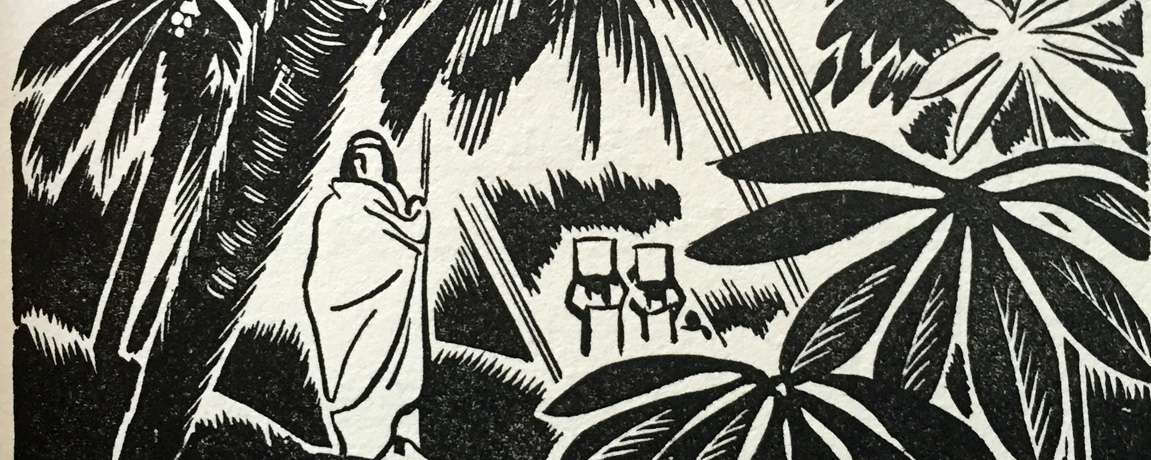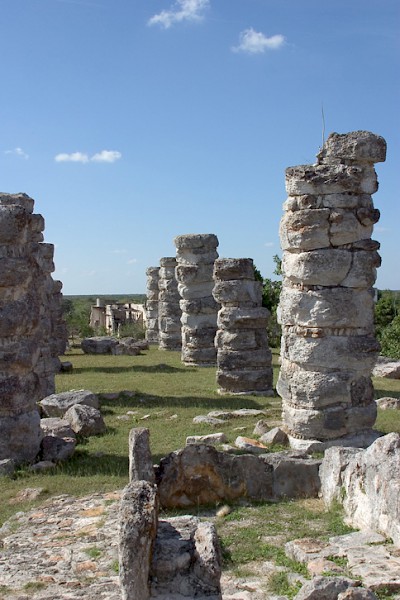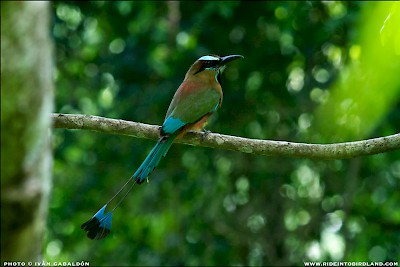Princess of Yucatan: On to Mayapan
By some strange whimsy of fate, the half-wit succeeded where wiser men failed. For Tzan did eventually bring news of Nakah to his people.
Nakah Returns
When the little slave princess of Itza had been incarcerated in the sacrificial prison of the temple, Hunnac Cuit, grizzled warrior cacique of Chichen -- because of his love for Copan-- had striven to set the maiden free. But in this far province of Aztec rule, the wily priesthood had so strengthened the chains of priestly power with which they were slowly and evilly fettering the empire that they could defy even a royal governor's decree. So Nakah must have gone to the sacrificial cenote had not her own wit led her to freedom.
By degrees, the fact of the victim's escape had slowly filtered through devious back-door routes into the knowledge of many. Acting upon this report, Hunnac Cuit had lent his aid to the Itzan searches, who had beat through jungle and wilderness to rescue Nakah. But the mysterious jungle keeps its secrets well.
Time and again, men of Itza had passed, unknowingly, within stone's throw of Nakah in her tree house, Nakah grubbing for roots, Nakah gathering flints or reeds or bark. It is always so in the jungle. The furious growth of tropic vegetation, the tangled green morasses, the brutal heat, the weird animal screams -- all things combine to dull man's senses when he invades the jungle. Thus, a lost one in the tropic wilderness may stay lost for months, even years. Nakah might have endured jungle loneliness for half a lifetime, had not fate led Tzan to her.
After the half-wit boy had brought the queer bark message back to Itza, it was a simple matter, with his help, to locate the girl and bring her to the forest meeting place of which he had spoken, the great tree.
A great tree indeed it was! A forest cypress tree near two hundred feet high, and of so huge a girth that fifty men standing shoulder to shoulder could barely encircle it. This ancient trunk was hollow and within it a spacious room had been arranged. Here the chosen men of Itza -- who under Copan were to go on the journey to the hidden Monjas -- had placed their carefully assembled stores. And here was staged the joyful reunion between the blind grandsire and the child of his raising. So much had happened, so much could be told -- but there was too scant time for the telling. This expedition, that the faithful few believed would bring back enough treasure to buy the freedom of the whole enslaved tribe, must push on its way into the land of the lost cities of Itza. This was a way not only likely to be beset by natural wilderness dangers, but was also fraught with fear of attacks from the scattering of savage aboriginal tribes which had never come under the yoke of either Mayan or Aztec culture.
Looking for Lost Cities
Though unkempt and scantily clad, these were a grave, stalwart lot of men gathered under the leadership of wise old Copan. Hard labor in the Aztec toils had made mighty men of those Itzans who survived. Garnered into the expedition were magnificent fellows from the quarries, broad-shouldered, narrow-hipped, and with muscles of arms and legs that stood out like cords. A cloth twisted about their loins was their only garb. From road building, stone laying, forest work, others had been drawn until the little army numbered half a hundred.
Nahau, who could handle men, and Calcingo, a forester, who knew more secrets of the vine-snared cities of old Itza than any other living person, managed such mechanical necessities as pack-bearing, the food, the trail-blazing. But Copan -- whose blind eyes had first foreseen the high, white dawn-light of freedom breaking upon the century-long night of Itza -- Copan was the real leader. It was a marvel that this sightless man, nearing three-score years, should dare risk life in the perils of forest trails, where his only guide must needs be a lead rope tied about the waist of another. But without Copan or young Nakah, the expedition must fail, for these two alone could read the old Mayan glyphs on the guide stones that the Mayan tradition taught would point the route to the treasure Monjas.
Toward Mayapan
From the rallying place of the tree storehouse, Calcingo led the way along dim forest trails in a northwesterly direction toward the site of Mayapan, that once great city of the Maya Standard in the North. For from the ruins of Mayapan had come that broken bit of stone that bore the record of the Itzan treasure house. And here must be sought the remainder of the slab with its code of directions.
Hardened as their bodies were to all manner of toil and exposure, it took the Itzan trail breakers half a moon to cover the fifty miles of jungle that lay between Chichen and the Mayan city of the north. It was a heartbreaking route they had to travel, beset by march and morass, liano tangles and long-leaved growths that cut like knife blades.
Even when they arrived at Mayapan, none save those most versed in forest lore knew that here stood a city that had sheltered its thousands. To the casual eye, the forest floor seemed merely cumbered with grassy ridges and great vine-tangled mounds, from the tops of some of which trees already towered upward. But when experienced hands tore away the veil of vines that overspread all things in lush drapery, man-made walls of stone were revealed. Here lay crumbling courts and palaces, temples, altars, obelisks. A century ago Mayapan had been the mighty capital of the North. Then came the desolation of war and the leading of its people into captivity. And now, with the passing of merely ten decades, the jungle had taken back to itself this "silent city" of a dispersed race. Dense green buried man's handiwork, and the once busy streets had become runways for monkey and wild turkey and prowling tiger.
With hatchet and sharply serrated maquahuitl*, the Itzans hewed away the smother of green from a few door and window arches. Reverently, they walked through rooms where once kings and princes had met, and where even now old royal sculptured portraits looked down from wall and statuary niche.
Mayapan, And On to Ake(h)
Because the tropic night was closing in, they made camp in a huge old building with sculptured borders of lynx and eagle, and a procession of stone tigers ornamenting the cornice. WIthin the long dark room, tiny fires for cooking died down. The party lay in uneasy sleep on its straw mats, while above them the rasping of the cicadas and the slow, soft swooping of bats seemed ghostly messengers from the past. WIth the relief of morning light, all set about the great task of unearthing in the "silent city" the remainder of the record slab. For days, Copan's men hacked through liano and scrub growth, uncovering towers, castles, great sculptures of the sacred toh bird and the chachalaca*, obelisks graven with stone processions of kings and armies. And then out by the gnomon* mound, that observatory of ancient astrologers, they found what they sought, the cracked, scored remnant of the treasure tablet. And "On to Akeh!" that old, old province of the farthest north, this guide stone ordered the way of march.
From ancient Akeh, with its jungle-swathed katunes*, the thirty-six calendar stones that marked time back through six thousand years of the Mayan empire, a similar engraved stone sent the wanderers west and south through a host of other "silent cities" -- Labna, profuse with sculptures, and Izamal and Uxmal.
And then came the directions. At templed, deserted Uxmal, the glyph-carved slab that bore the treasure sign, read:
Go to the south till you find the great river of the Winding Snake. Its waters pour into that lake called Chaltana, in the midst of which stands the lofty island of Tayasal. Here, in the hidden mountain shrine sits the stone figure of Itzamna, god of the earth. Beneath his stone lies the treasure. Other things have we also prepared...
The message here ended abruptly in the cracked and chipped surface of the tablet. None could decipher it further.
To the great river of the Winding Snake, neither Copan nor any of his men had ever been! Worse still, they knew naught whatever of it. So now began the hardest part of the wandering. Across the boundaries of the Old Empire and into new lands the search took them. The renewal of garments, weapons, the making of boats absorbed vast spaces of time. Now and again the little party, on rafts of lashed logs or fire-hollowed dugouts, followed the length of some river to its emptying -- only to find no lake set with a temple-crowned island. To the weary ones, the promises of the old prophets seemed to dwindle to mirage-like things of no substance.
Waking Up To Laughter
Almost without hope, the wanderers kept on. Adventures of every sort dogged their trail -- adventures good, bad and some merely of the sort to bring a smile to the lips. Such a one befell Ek-tal, the short, sturdy headman of the camp hunters, who, in a day of game-trailing, had been well sprinkled with the juice of certain sap-dripping bushes of the dense undergrowth. At dusk, camp was made beneath a gnarled pochote, or cotton ball tree. In the hot tropic night, the pochote's balls opened, their store of silky white filaments of tree-cotton drifted down over the sleepers on the ground below. With the coming of daylight, what roars of laughter burst from his companions! For the Ek-tal's sap-sticky body the tree-cotton clung thickly. When he reared himself up, he looked for all the world like a huge, white-feathered fowl, with his black eyes peering out comically from beneath a crest of white cotton tufts that stuck to his very hair.
Falling Into a Hole
On another day, though, this same Ek-tal dropped into an adventure of a far different sort. He had been tracking a chacmool, red jaguar (Editor's Note: Wikipedia disagrees with her definition of chacmool), and had just lifted his hulche* for a spear-throw, when the very ground beneath his feet gave way and he disappeared entirely from the view of Canul and Inam, his assistants. Although now fearing deeply that the red jaguar had not been a jaguar at all, but a uay* chacmool, the demon beast that had bewitched the chief hunter into nothingness, these two went to the aid of the lost Ek-tal. Pushing bravely forward, they came to the place where the ground had given way, leaving a dark deep hole that led down into the unknown. Kneeling close and listening, they thought they heard a faint groan down in the depths.
They leaped to their feet, and swinging their knife blades as fast as they could, soon hacked down a pair of long, slender saplings. These they bound together, side-by-side, with vines to make a sort of ladder, then thrust this into the hole until the end rested on firmness below. And now the men sturdily clambered downward along their ladder. Strange smells smote their nostrils and brought on shivers of awe, and as their feet touched bottom, swishy things brushed against their knees. The sudden sound of a voice made them nearly jump out of their brown skins. But the voice was merely that of Ek-tal, who had recovered from the daze of his fall, and was calling out where he lay and for them to come to him. Groping forward through dimness and through the swishy clinging things, the rescuers got hands on the chief hunter, dragged him to his feet, and helped him climb back up into the blessed daylight.
Bruises on legs and hips and a few stone cuts about the head were the only results of Ek-tal's plunge into the earth. He was quite able to tramp back to camp on his own two legs.
Will They Go Back Down?
That night, beside the cheerful glow of the cook fires and in the comfortable companionship of their fellow wanderers, the three had to tell over and over again the tale of their down-into-the-earth adventure.
"Shi..." shivered Inam, chewing a leaf of jungle tobacco to ease his tense nerves. "That hole had a feel as of a spirit place, as though the souls of people long dead still hovered there..."
"Ei..." broke in Ek-tal. "And full well I know it was a place where people had once been. For, when I came to my senses after the fall, and began to roll my body about and feel with my hands, my fingers moved over hard stone that in some spots had been chiseled smooth, and in other spots cut deep with carvings... carvings such as we used to find in the old buried cities near our own Chichen Itza.."
"Chiseled stone, carved glyphs..."
Old Copan stood up, towering over his fellows there in the glow of the forest campfire, sightless eyes turned towards the speaker, his hands extended pleadingly.
"Ah, if I, too, could but touch the carved stones of the strange cave, could read their message with my fingertips! Mayhap, these are the words from the past that can help our search!"
****
gnomon - the part of the sundial that casts a shadow
chacalaca - brown birds found in Central and South America
maquahuitl - a wooden sword with obsidian blades
katunes - calendar stones
hulche - Maya dart gun
uay - Maya for "ghost" or "something not here"



















